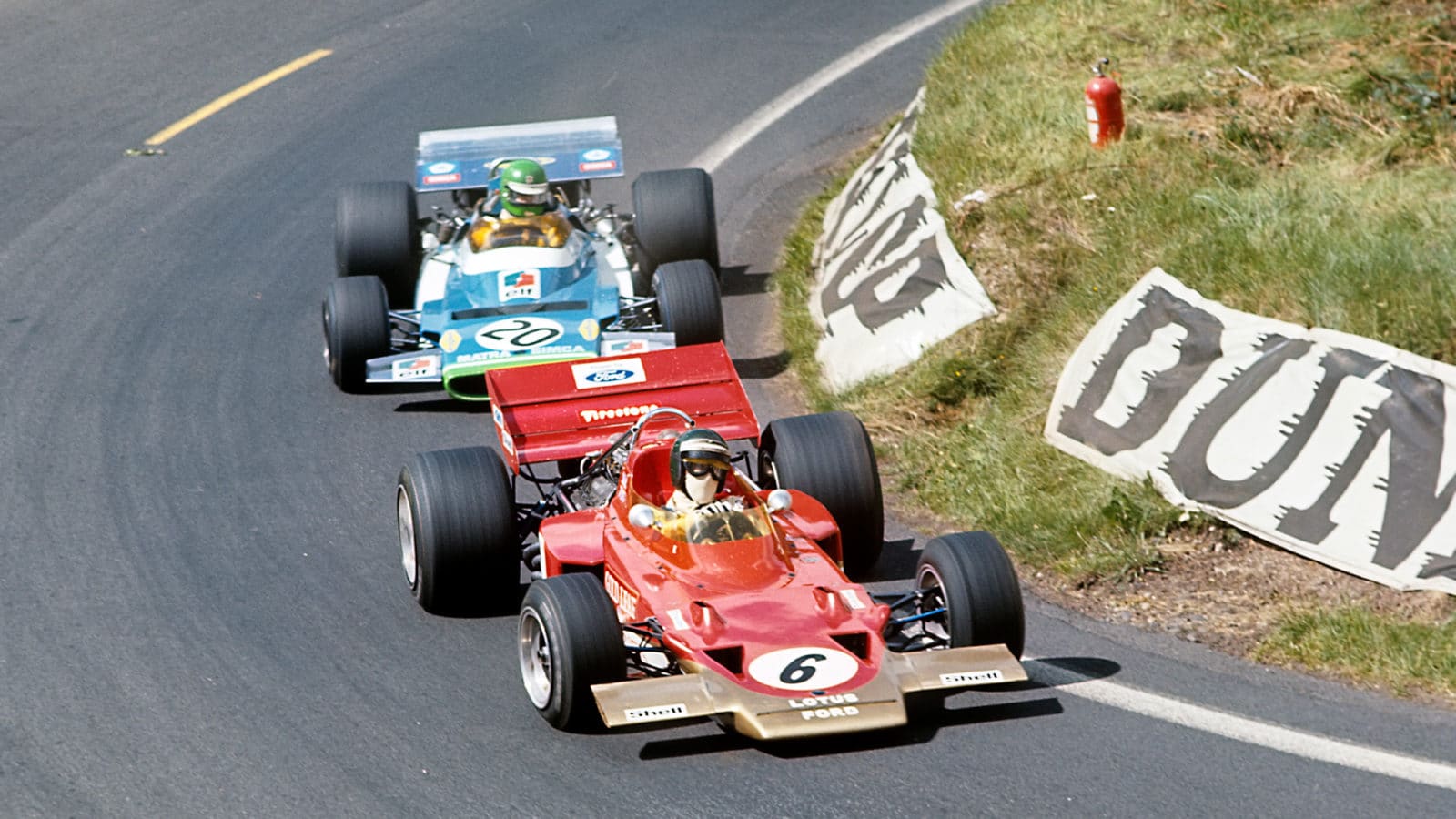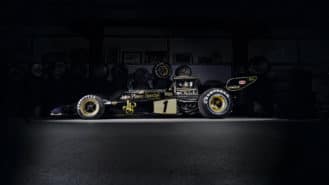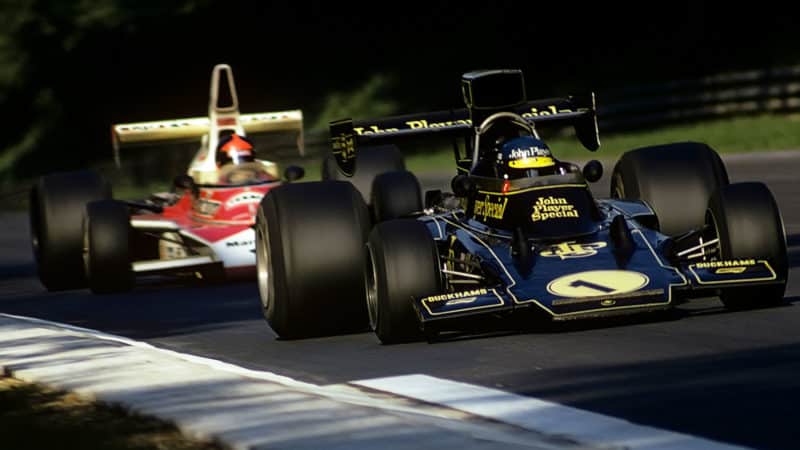Rob Walker later recalled asking Graham Hill what would happen now? Hill, an experienced Lotus campaigner, then driving Walker’s private Lotus 49C, said: “Colin will put his arm round Rindt’s shoulder, lead him away for a friendly chat and Jochen will get back into the car.” And that was precisely what happened.
Rindt reverted to the Lotus 49C and scored a stupendous last-corner win at Monaco. He used the old car again at Spa before a reworked 72 broke cover at Zandvoort. A suspension re-design had, in Rindt’s view, given the car a “better feel” its antisquat characteristics had been reduced and he trampled the opposition underfoot to score his second win of the season. Sadly, that same race was scarred by the death of Piers Courage when he crashed Frank Williams’ De Tomaso. Photographs of the winner’s rostrum show Rindt in deep depression, scarcely acknowledging victory, for he and his wife Nina were close friends of Piers and Sally Courage.
Many regarded this tragedy as the beginning of the end of Rindt’s enthusiasm for F1. At Clermont Ferrand for the 1970 French GP, Rindt was still regarding the 72 with a justifiable degree of paranoia. Chapman fumed to Motor Sport‘s’s Denis Jenkinson: “What am I going to do with this bloke? He has lightning reflexes, is bloody quick, but keeps telling me how to design my cars.”
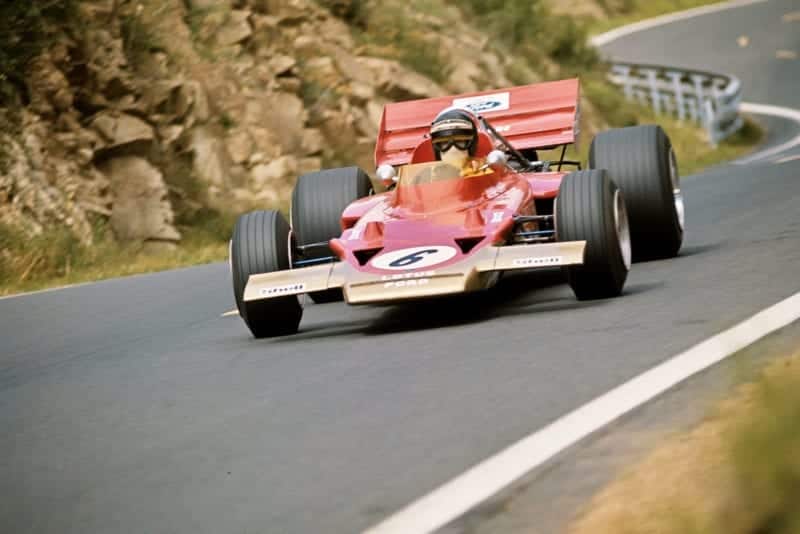
Rindt reeled in Beltoise to to take a third win of the year at Clermont Ferrand post-Chapman argument
Getty Images
Jackie Stewart was possibly Rindt’s closest friend in the sport. “Colin’s approach was a little too slapdash for me, and that’s why I never drove for him,” he admitted. “By the time of his death I think Jochen was certainly talking in terms of retirement. He told me, ‘I can’t get on with this car it’s going to break’. But he just had to drive it because it was so fast.”
Herbie Blash, Rindt’s mechanic and now racing manager for Yamaha’s F1 programme, also recalls that Jochen was increasingly preoccupied over Chapman’s obsession with saving weight and bulk at any cost. Rindt even wrote to Chapman telling him he was concerned about the fragility of his cars, echoing a similar correspondence with Innes Ireland less than 10 years before.
Yet Rindt would win in France, at Brands Hatch and Hockenheim. He retired from the Austrian GP at the Osterrreichring, yet went to Monza for the Italian GP seemingly poised to clinch the championship.
“Miles reported to Chapman that the car felt ‘horrifyingly unstable’”
Rindt’s alarming prophesy for the Lotus 72 became self-fulfilling. On Saturday, 5 September, 1970, he drove out for practice. At Chapman’s insistence, he was running the car without nose wings or aerofoils in an attempt to match the straight-line speed of the powerful Ferrari 312B1 flat-12s. Team-mate John Miles was told to do the same, but reported to Chapman that the car felt “horrifyingly unstable” in this configuration. Braking hard, Rindt had just overtaken Denny Hulme when his car began weaving under braking and speared left into the inadequately secured guard rail. Rindt suffered neck injuries when he ‘submarined’ into the cockpit. It would take another seven years of investigations before it was decided that a front brake-shaft failure had caused his loss of control, although the unsecured barrier was cited as the cause of his death.
Rindt’s championship points lead was by this stage almost unassailable. Ferrari team leader Jacky Ickx would have to win all three of the remaining races to take the title. He managed to win two, but when Emerson Fittipaldi took the Lotus 72 to victory at Watkins Glen in only his fourth Grand Prix outing, Jochen became the sport’s only posthumous title holder.
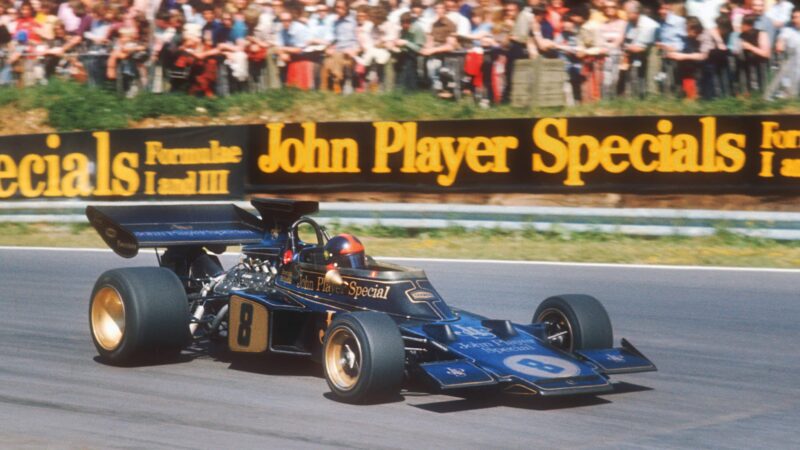
Fittipaldi heads to Brands Hatch victory in 72
Grand Prix Photo
In 1971, Team Lotus marked time. Fittipaldi was obviously a man of the future, but the after-effects of a midseason road accident left him below par for much of the season. Not until 1972, when the 72 first wore the steely black and gold John Player Special livery, was the Brazilian able to exploit the 72’s terrific potential. Emerson stormed to victory in the Spanish, Belgian, British, Austrian and Italian GPs to become the sport’s youngest ever world champion, aged only 25.
In 1973, Chapman created a ‘superteam’ by signing up the dynamic Ronnie Peterson as Fittipaldi’s partner. The team switched from Firestone to Goodyear tyres, but the 72s were still the class of the field in the opening races of the year.
